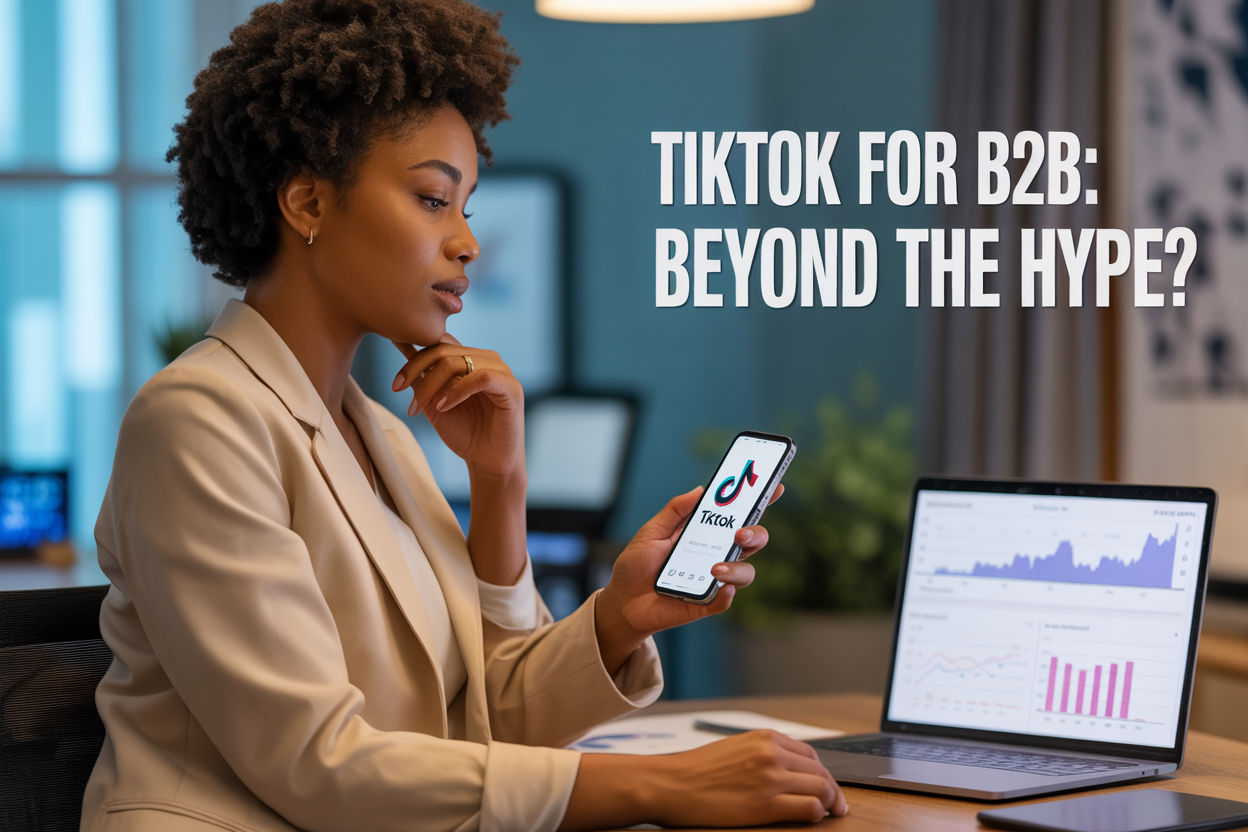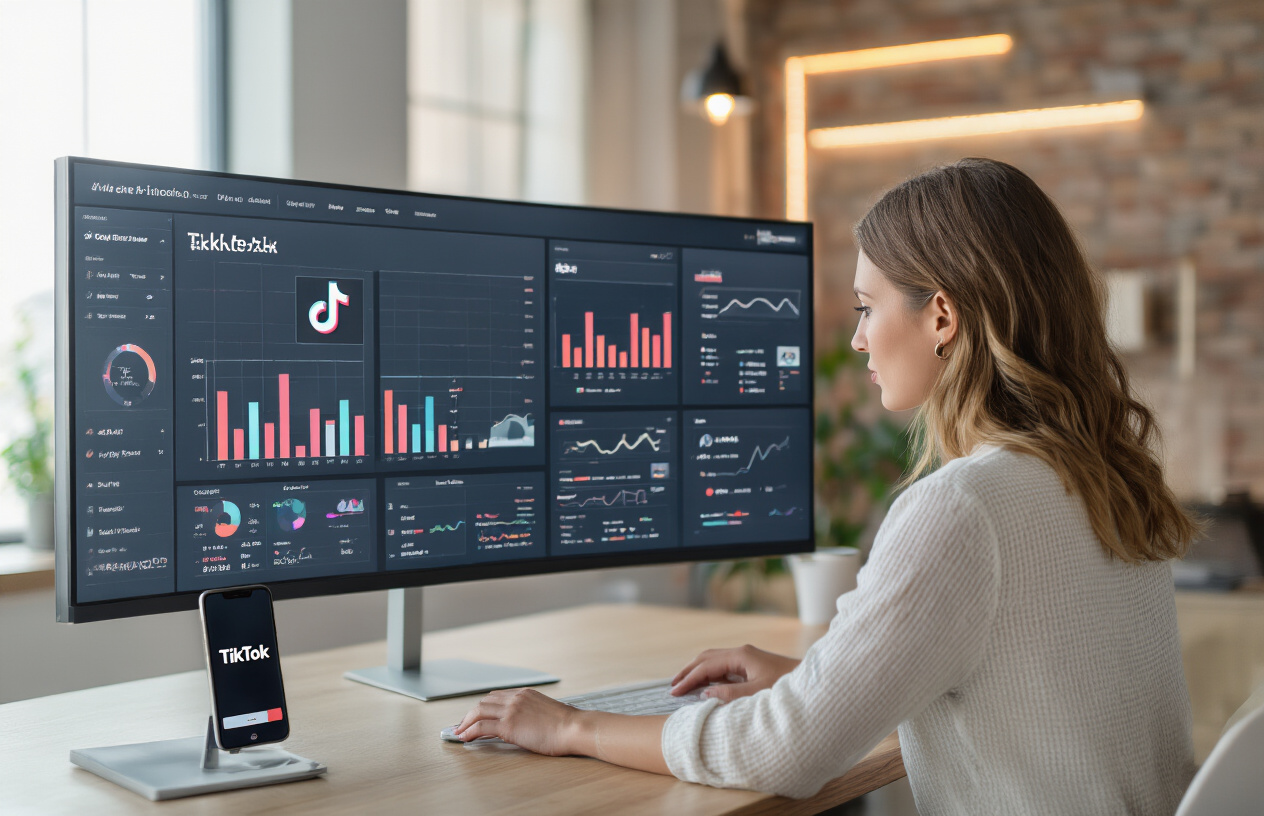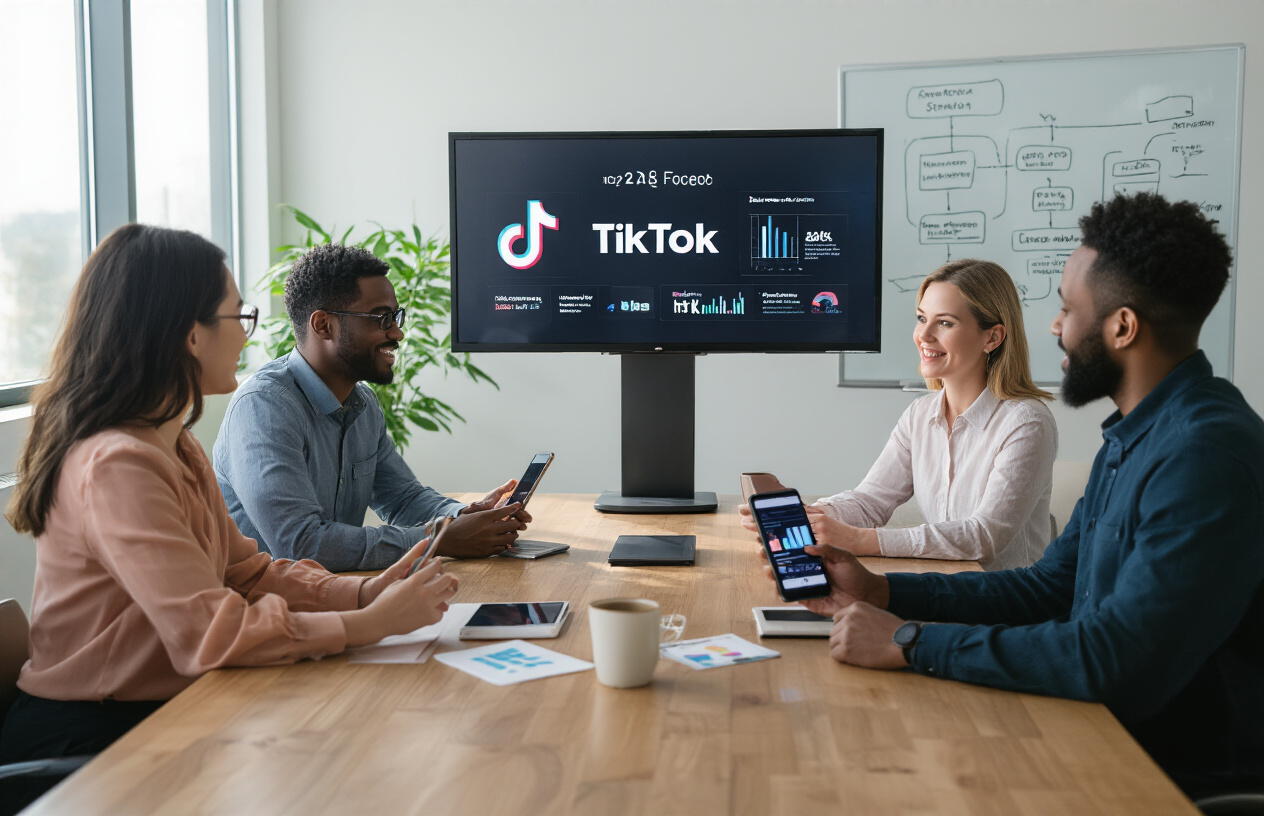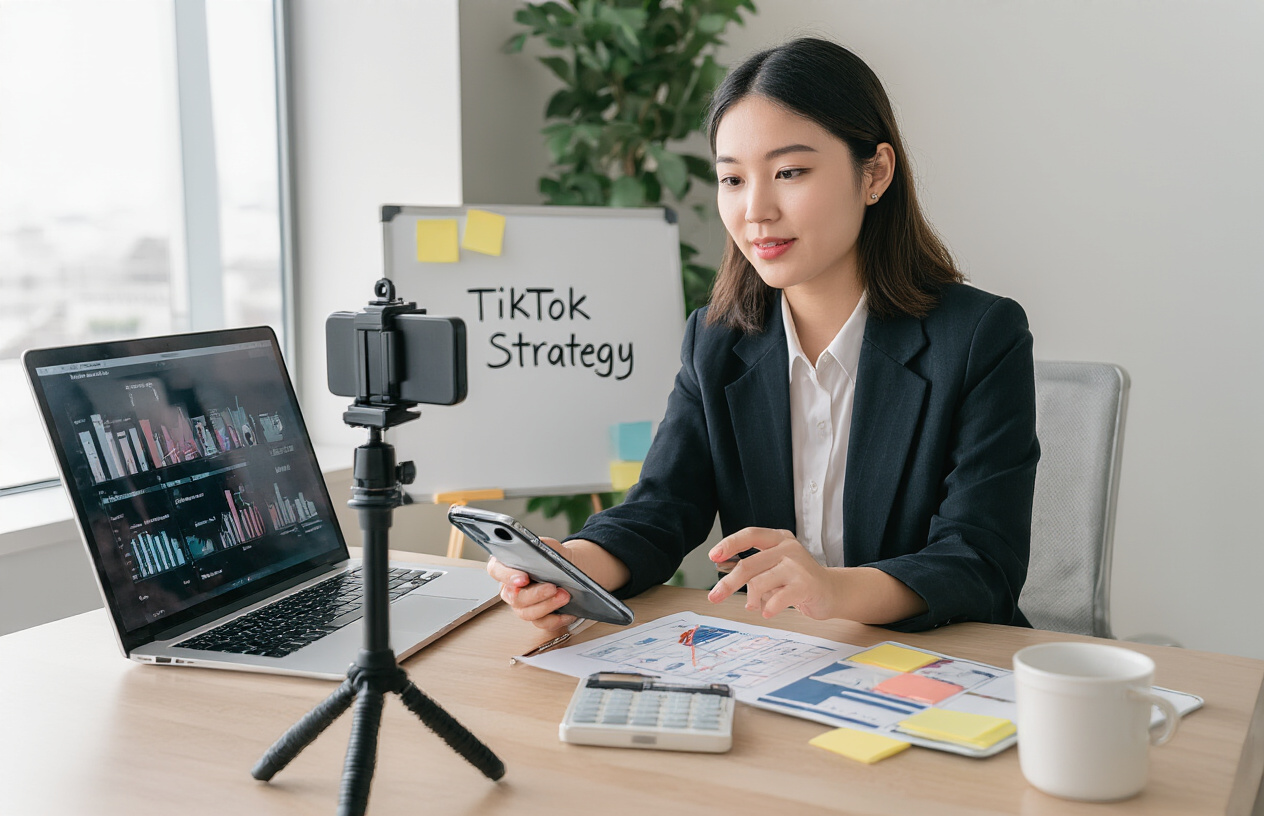TikTok Marketing: Is It Worth the Hype for B2B Brands?

“TikTok for B2B? Isn’t that like wearing a tuxedo to a pool party?” I hear you thinking that right now. And honestly, a year ago, I would’ve agreed with you.
But here’s the awkward truth: while 65% of B2B marketers are still debating if TikTok marketing deserves their attention, their more adventurous competitors are already capturing decision-makers during their morning scroll sessions.
This isn’t just another “try this shiny platform” post. I’ve spent six months tracking 12 B2B brands who dared to dance with TikTok, documenting what actually moved the needle versus what flopped spectacularly.
The results surprised even me. Especially what happened when an enterprise software company ditched their corporate speak and tried something that had their legal team sweating bullets…
Understanding TikTok’s B2B Potential

A. TikTok’s user demographics and reach
TikTok isn’t just for teens dancing anymore. The platform has exploded to over 1 billion monthly active users globally, and the demographics might surprise you.
While Gen Z still dominates (41% of users are between 16-24), professionals between 25-40 now make up nearly 38% of the platform. That’s a huge chunk of business decision-makers scrolling through their feeds daily.
What’s even more interesting? The average time spent on TikTok is 95 minutes per day. That’s longer than people spend on Facebook and Instagram combined. Users aren’t just passing time—they’re actively engaged.
The B2B opportunity becomes clearer when you look at user interests. According to recent data, business, technology, and professional development content has grown by 225% in the last year alone. People aren’t just watching dance challenges; they’re consuming valuable business content.
B. How B2B brands currently use TikTok
B2B companies on TikTok typically fall into three categories:
- Educational powerhouses – Sharing industry insights and thought leadership in bite-sized, engaging formats
- Culture showcasers – Highlighting company personality and behind-the-scenes glimpses
- Problem solvers – Addressing pain points with quick tips and solutions
Adobe crushes it with design tutorials that naturally showcase their products. HubSpot delivers marketing tips that position them as experts without the hard sell. Even traditionally “boring” companies like Shopify turn complex e-commerce concepts into digestible content.
The key? None of these brands are selling directly. They’re building authority and recognition through value-first content.
C. Success stories from early B2B adopters
Zoom jumped on TikTok early and now boasts over 185,000 followers. Their approach? Simple video conferencing tips mixed with office humor that resonates with remote workers.
IBM takes a different angle. Their account features employees explaining complex tech concepts in approachable ways. One video explaining quantum computing in 60 seconds racked up 2.3 million views and drove a 34% increase in career page visits.
What about smaller players? Semrush, an SEO software company, grew from zero to 55,000 followers in six months by creating relatable content about digital marketing struggles. Their ROI? A 22% increase in free trial signups directly attributed to TikTok.
D. Key differences from traditional B2B platforms
TikTok flips the traditional B2B playbook on its head:
| Traditional B2B Platforms | TikTok |
|---|---|
| Professional, formal tone | Authentic, conversational approach |
| Long-form content | 15-60 second videos |
| Heavy on jargon | Simplified explanations |
| Lead generation focus | Brand awareness first |
| Scheduled campaigns | Trend-responsive content |
The biggest shift? Personality wins over polish. Videos shot on phones often outperform highly produced content. TikTok rewards authenticity and creativity rather than corporate messaging.
Unlike LinkedIn where business content is expected, on TikTok you’re competing with entertainment. This means your B2B content needs to be genuinely interesting, not just informative.
Measuring TikTok ROI for B2B Marketing

A. Defining success metrics beyond views
TikTok’s vanity metrics can be deceiving. Sure, getting 100,000 views feels amazing, but what’s that actually worth to your B2B company?
Smart B2B marketers on TikTok track metrics that actually move the needle:
- Website traffic: Using UTM parameters to track visitors from TikTok
- Lead quality: Are TikTok-generated leads actually good fits for your solution?
- Content engagement ratio: Comments and shares divided by views (higher is better)
- Saved content: When professionals save your content, they’re flagging it as valuable
- Brand sentiment shifts: Tracking mention quality before and after campaigns
- Sales cycle influence: Are TikTok touchpoints shortening your sales process?
The most successful B2B brands on TikTok don’t chase viral moments. They build consistent touchpoints that nudge decision-makers through awareness, consideration, and eventually, conversion.
B. Attribution challenges and solutions
Attribution for TikTok B2B marketing is tough. No question about it.
The buyer’s journey isn’t linear anymore. Your CTO might discover your product through a 30-second TikTok, research on LinkedIn, then finally convert through a Google search weeks later.
Common attribution pitfalls include:
- Platform isolation: Looking at TikTok performance in a vacuum
- Last-touch bias: Giving all credit to the final touchpoint
- Delayed impact: B2B sales cycles can span months, making immediate ROI measurement tricky
How to solve this? Multi-touch attribution models work better for B2B TikTok marketing:
"We ask new leads 'where did you first hear about us?' and started noticing TikTok mentions jumping from 0% to 11% within three months of launching our channel."
Some practical solutions:
- Add TikTok-specific landing pages or offer codes
- Implement post-view and post-engagement tracking windows of 30+ days
- Survey customers about their discovery journey
- Track branded search volume increases that correlate with TikTok campaigns
C. Comparing TikTok engagement to LinkedIn and other B2B channels
The numbers don’t lie. When comparing engagement across platforms, TikTok often delivers surprising results for B2B brands:
| Metric | TikTok | ||
|---|---|---|---|
| Avg. engagement rate | 5.8% | 2.0% | 0.07% |
| Cost per impression | Lower | Higher | Medium |
| Audience attention span | 10-60 seconds | 2-3 minutes | <10 seconds |
| Content shelf life | 3-7 days | 24-48 hours | ~20 minutes |
TikTok’s algorithm gives everyone a fair shot. A B2B startup can get the same view potential as an enterprise giant if the content resonates. This simply isn’t true on LinkedIn where follower count heavily influences reach.
The comment quality differs too. LinkedIn comments tend toward professional positioning, while TikTok comments are often more honest and revealing about pain points.
Many B2B marketers report that while LinkedIn still delivers more direct conversions, TikTok excels at:
- Building authentic brand perception
- Reaching decision-makers in a relaxed state
- Generating word-of-mouth at scale
- Attracting younger talent to your company
- Creating content that can be repurposed across channels
The real power comes when you connect these platforms rather than treating them as competitors. Use TikTok to build awareness and LinkedIn to drive consideration and conversion.
Effective TikTok Content Strategies for B2B

Humanizing your brand through authentic content
TikTok users can smell inauthenticity from a mile away. B2B brands winning on this platform ditch the corporate robot act and show their human side.
What does this look like in practice? It’s your engineers explaining complex concepts with a whiteboard in 60 seconds. It’s your CEO responding to industry news with unscripted thoughts. It’s showing your office dogs or celebrating team wins.
Authenticity isn’t just nice-to-have – it’s essential. When Sage Accounting shared behind-the-scenes clips of their product team brainstorming, engagement shot up 340% compared to their polished corporate content.
Educational vs. entertaining approaches
The age-old debate: should you educate or entertain? On TikTok, the answer is both.
Educational content works wonders for B2B – breaking down complex topics into bite-sized lessons builds credibility and delivers value. Deloitte’s 30-second explainers on business trends routinely outperform their longer-form LinkedIn content.
But pure education without entertainment falls flat. The magic happens in the middle:
| Approach | Works Well For | Example |
|---|---|---|
| Edu-tainment | Complex services | IBM explaining AI with trending sounds |
| Problem-solution | SaaS products | Monday.com showing productivity hacks |
| Expert humor | Professional services | Accountants joking about tax season |
Leveraging trending formats for business messaging
No need to reinvent the wheel. TikTok’s trending formats provide ready-made templates for your B2B messaging.
The “POV” format works brilliantly for showing pain points your solutions solve. The “before and after” structure perfectly demonstrates your product’s impact. Even duets and stitches let you join conversations happening in your industry.
HubSpot masterfully adapts trends, like using the “Things that just make sense” format to highlight CRM features. Their adaptation of trends feels natural, not forced.
Repurposing existing B2B content for TikTok
You don’t need to create entirely new content strategies. That 10-page whitepaper? Break it into 8-10 TikTok snippets highlighting key findings. That case study? Turn the results into a quick before-and-after reveal.
Adobe transforms their detailed tutorials into quick “did you know?” feature highlights that drive curious viewers to their fuller content.
The key is distillation, not dilution. Extract the essence, add visual punch, and create multiple touchpoints from a single asset.
Employee advocacy and thought leadership
Your employees are your secret TikTok weapon. Individual faces build trust faster than corporate logos ever will.
When Salesforce empowered their team to share industry insights, they saw 5x the engagement of brand-posted content. The reason? People follow people, not companies.
Encourage team members with subject expertise to become your TikTok ambassadors. Give them guidelines, not scripts. The slight imperfections in their delivery make the content more relatable than polished marketing-speak.
Building a TikTok Presence Without Breaking the Budget

A. Low-cost content creation tools and techniques
Think TikTok marketing requires expensive equipment and a production team? Not even close.
Most B2B brands already have everything needed to create compelling TikTok content. Your smartphone camera is perfectly adequate – in fact, overly polished content often performs worse than authentic, simple videos.
Here’s what you actually need:
- Smartphone – The latest models shoot in 4K, but even older phones work fine
- Basic tripod ($15-25) – Keeps your shots steady
- Ring light ($20-40) – Improves lighting dramatically
- Free editing apps – CapCut, InShot, or TikTok’s built-in editor
Some B2B companies worry about branding consistency, but TikTok thrives on authenticity. Your content can be simple:
- Quick tips relevant to your industry
- Behind-the-scenes glimpses of your team
- Product demonstrations done casually
- Responses to common customer questions
B2B success on TikTok often comes from scrappy, creative approaches rather than big budgets. Repurpose existing content from blogs, webinars, and presentations to maximize efficiency.
B. Time investment considerations
Time is money—especially for busy B2B teams. Here’s the real talk on time commitments:
Creating effective TikTok content requires less time than you might think. The platform rewards brevity:
- Content planning: 1-2 hours monthly for content calendar
- Shooting: 30-60 minutes weekly (batch filming multiple videos)
- Editing: 15-30 minutes per video
- Community management: 20-30 minutes daily
The smartest approach? Designate a small, nimble team (or even just one person) who understands both your business and the platform’s culture.
Many B2B companies find success by giving younger team members creative freedom. They often understand the platform natively and can produce content that resonates without requiring excessive oversight.
Remember that TikTok doesn’t demand daily posting. Consistency matters more than frequency – 2-3 quality posts weekly beats daily mediocre content.
C. Balancing organic and paid strategies
Your TikTok strategy doesn’t have to be all-or-nothing when it comes to spending.
Start with 100% organic content to test what resonates with your audience. Once you identify winning formats and messages, then consider amplifying with paid promotion.
Smart ways to balance your approach:
- Test organically, scale with paid: Only boost content that’s already proven successful
- Target strategically: TikTok’s business platform allows precise B2B targeting
- Start small: Test with modest budgets ($50-100) before committing more
- Measure diligently: Track both organic and paid performance metrics
Many B2B brands find success using a 70/30 split: 70% organic content focused on building community and authority, with 30% paid promotion to expand reach beyond existing followers.
The beauty of TikTok? Even modest paid budgets can dramatically increase visibility if your content genuinely connects with viewers. The algorithm rewards engagement regardless of whether content is sponsored.
Navigating TikTok’s Challenges for B2B Marketers

Addressing perception issues with stakeholders
TikTok still raises eyebrows in many boardrooms. When you mention TikTok marketing to your C-suite, you might get responses like “Isn’t that for dancing teenagers?” or “Our industry is too serious for that platform.”
The perception gap is real. Many B2B stakeholders see TikTok as frivolous when it’s actually evolving into a powerful business platform.
To win over skeptical stakeholders:
- Share competitor success stories in your industry
- Present platform demographics showing the growing professional audience
- Start small with a pilot program and measurable KPIs
- Frame it as audience research rather than a full marketing commitment
One marketing director at a SaaS company told me: “I brought TikTok data to three straight meetings before anyone took me seriously. The fourth time, I showed them our competitor’s viral product demo, and suddenly everyone wanted in.”
Maintaining brand professionalism
The tension between TikTok’s casual nature and B2B professionalism is tricky to navigate. But “professional” doesn’t have to mean “boring.”
B2B brands succeeding on TikTok find that sweet spot between authentic personality and industry credibility. They’re showing the humans behind the brand while still demonstrating expertise.
Smart approaches include:
- Educational content that simplifies complex topics
- Behind-the-scenes glimpses that humanize your company
- Thought leadership with a conversational tone
- Industry humor that resonates with your specific audience
Companies like Shopify and HubSpot nail this balance. They create content that feels native to TikTok while maintaining their professional reputation.
Content moderation and brand safety concerns
Your brand could be one swipe away from questionable content on TikTok—that’s the reality.
Unlike LinkedIn’s tightly controlled environment, TikTok’s algorithm-driven experience means less predictability around what content appears alongside yours.
Practical steps for brand safety:
- Create a clear content policy specific to TikTok
- Monitor comment sections vigilantly
- Consider TikTok’s Business account options which offer more control
- Set up regular brand safety reviews of your TikTok presence
The platform’s constantly improving its moderation tools, but staying vigilant matters. As one tech CMO put it: “We check our TikTok environment twice as often as other platforms—it moves too fast to set and forget.”
Data privacy and security considerations
TikTok’s data practices remain under scrutiny worldwide. This isn’t just a theoretical concern—it impacts whether your B2B brand should engage at all.
Key considerations include:
- Geographic restrictions that might affect global teams
- The types of data your specific industry can share on social platforms
- Internal policies about employee participation
- How TikTok fits into your overall data governance approach
Many B2B companies are creating tiered approaches—using TikTok for general brand awareness while keeping sensitive information, customer stories, and proprietary processes off the platform entirely.
Smart B2B marketers are also staying flexible, ready to pivot if regulatory landscapes shift. Building a TikTok strategy with a backup plan isn’t paranoid—it’s pragmatic.

TikTok presents a unique opportunity for B2B brands willing to step outside traditional marketing approaches. While measuring ROI requires careful planning and the right metrics, the platform’s growing business audience and engagement potential can’t be ignored. With strategic content that balances educational value, personality, and trend awareness, even budget-conscious B2B marketers can establish a meaningful presence.
Despite challenges like algorithm unpredictability and the need for consistent content creation, the benefits often outweigh the concerns. By starting small, focusing on authentic storytelling, and adapting to the platform’s casual nature, B2B brands can leverage TikTok to humanize their messaging and connect with decision-makers in unexpected ways. The hype around TikTok for B2B may indeed be justified for brands ready to evolve their digital marketing strategy.